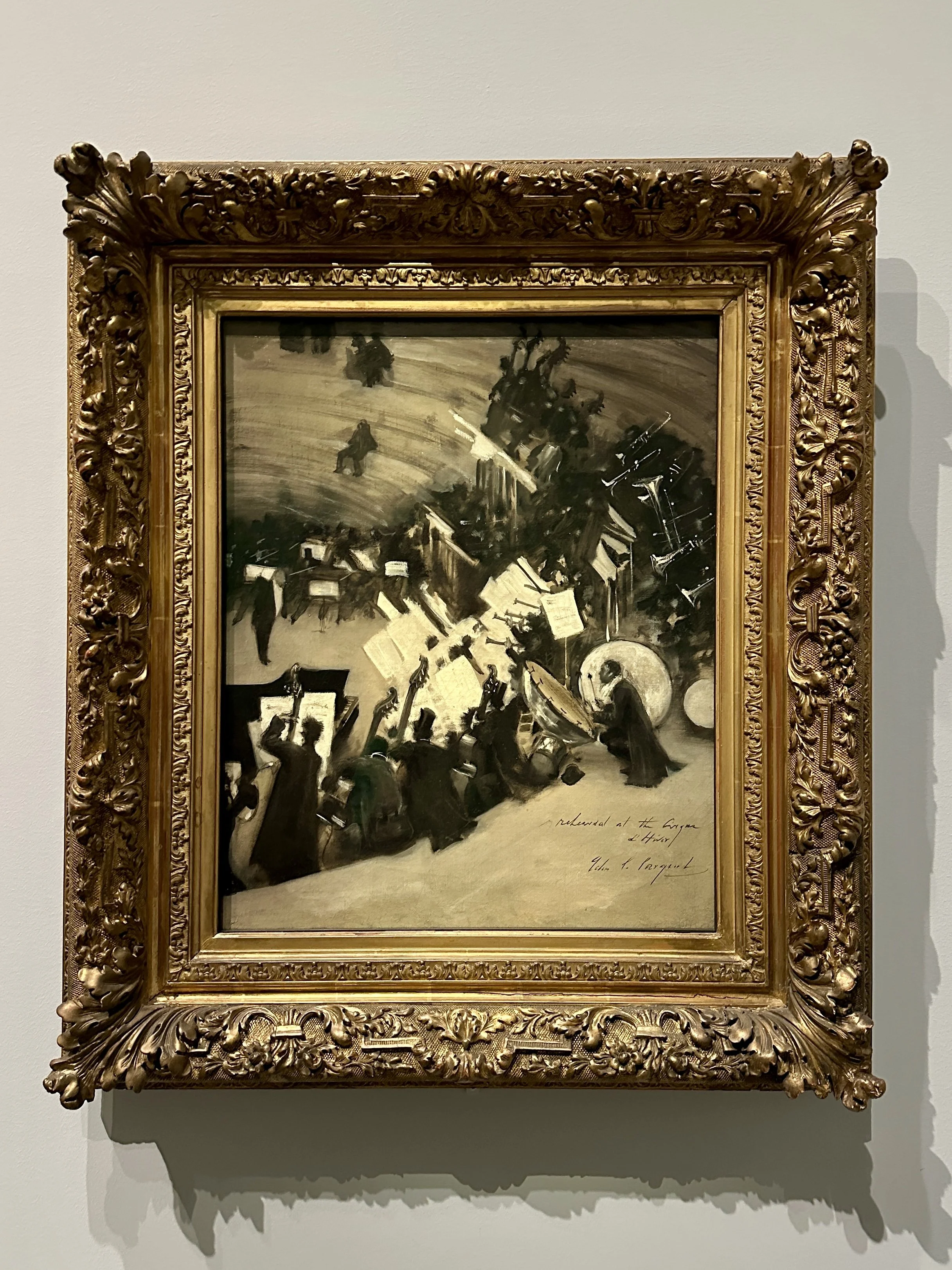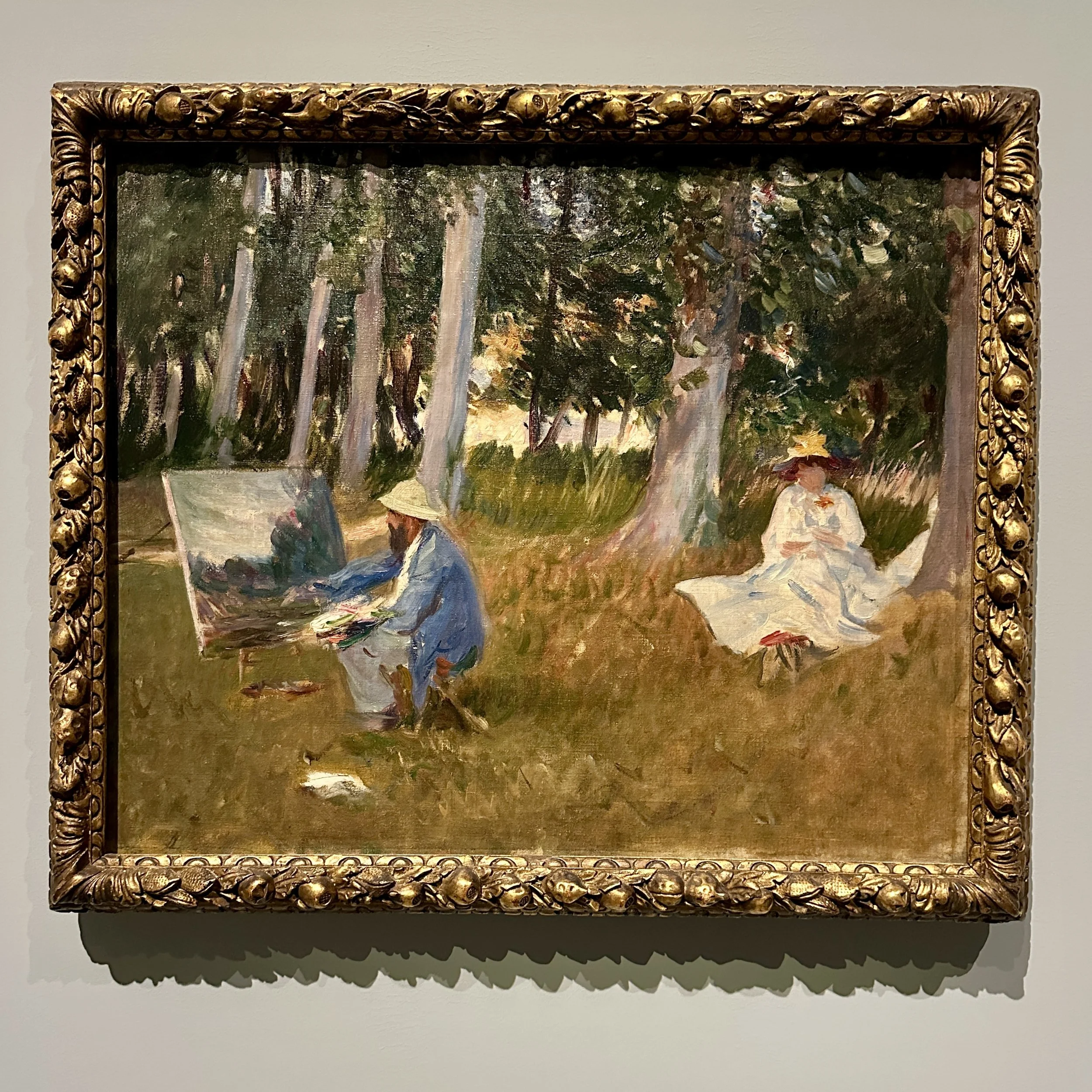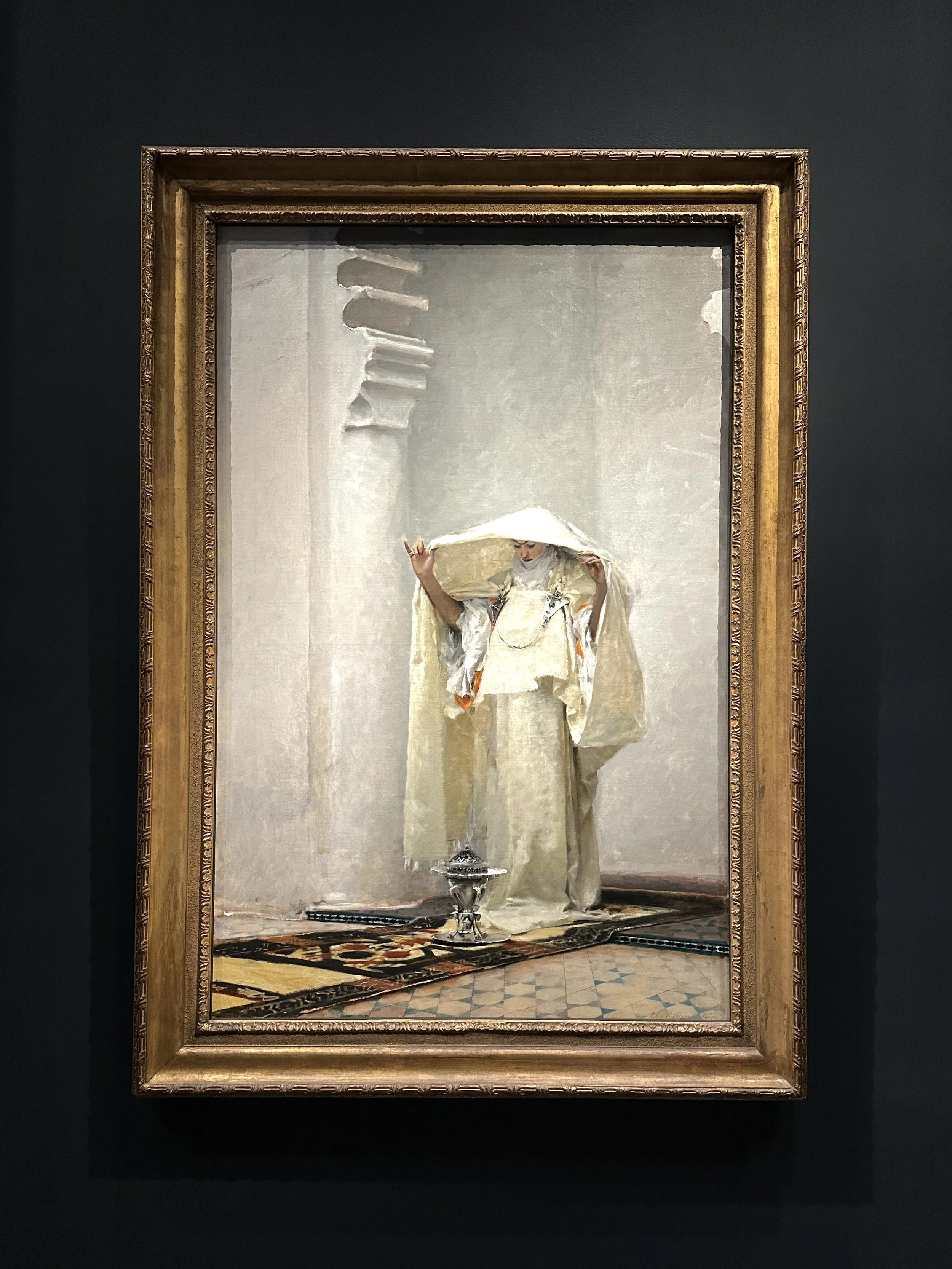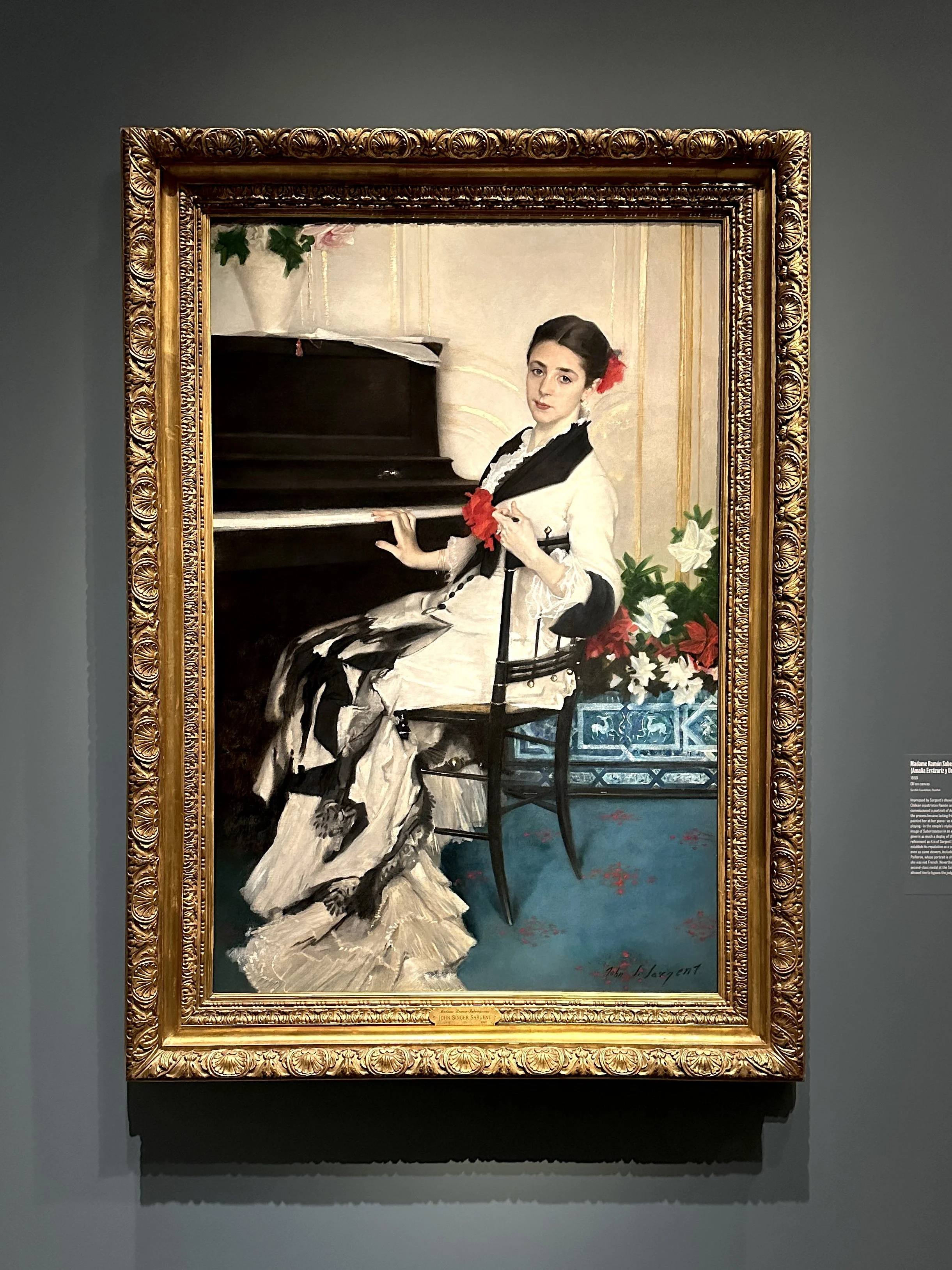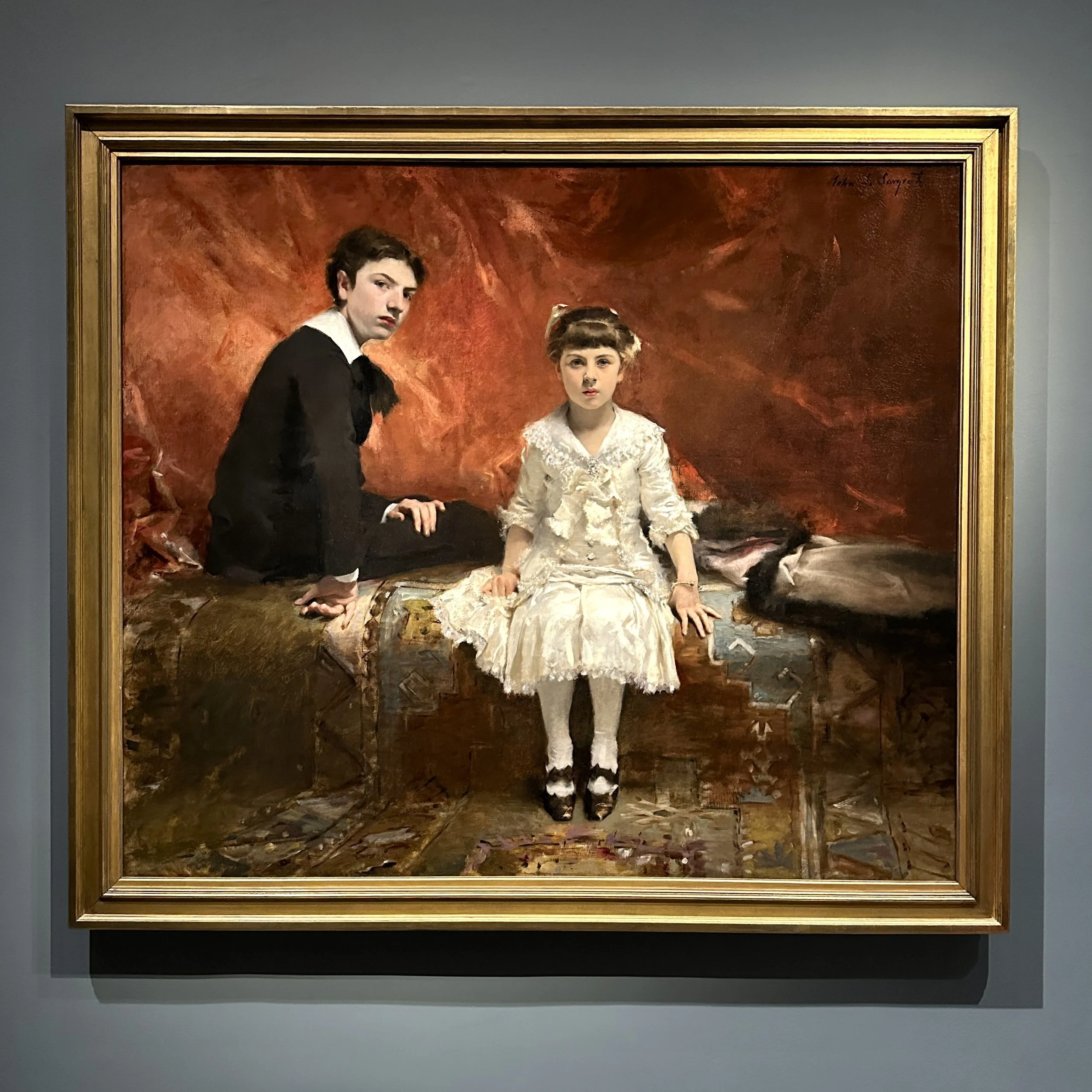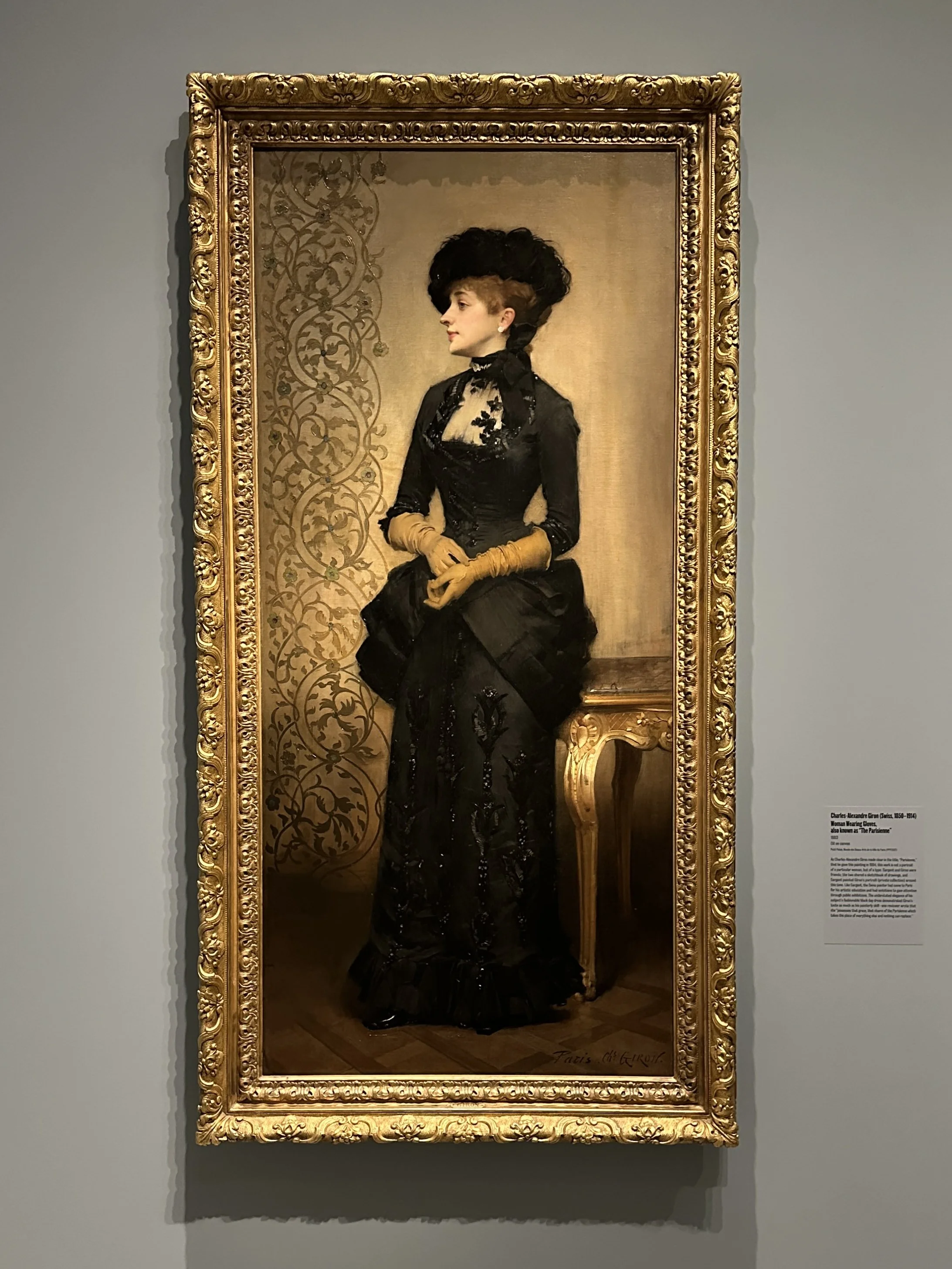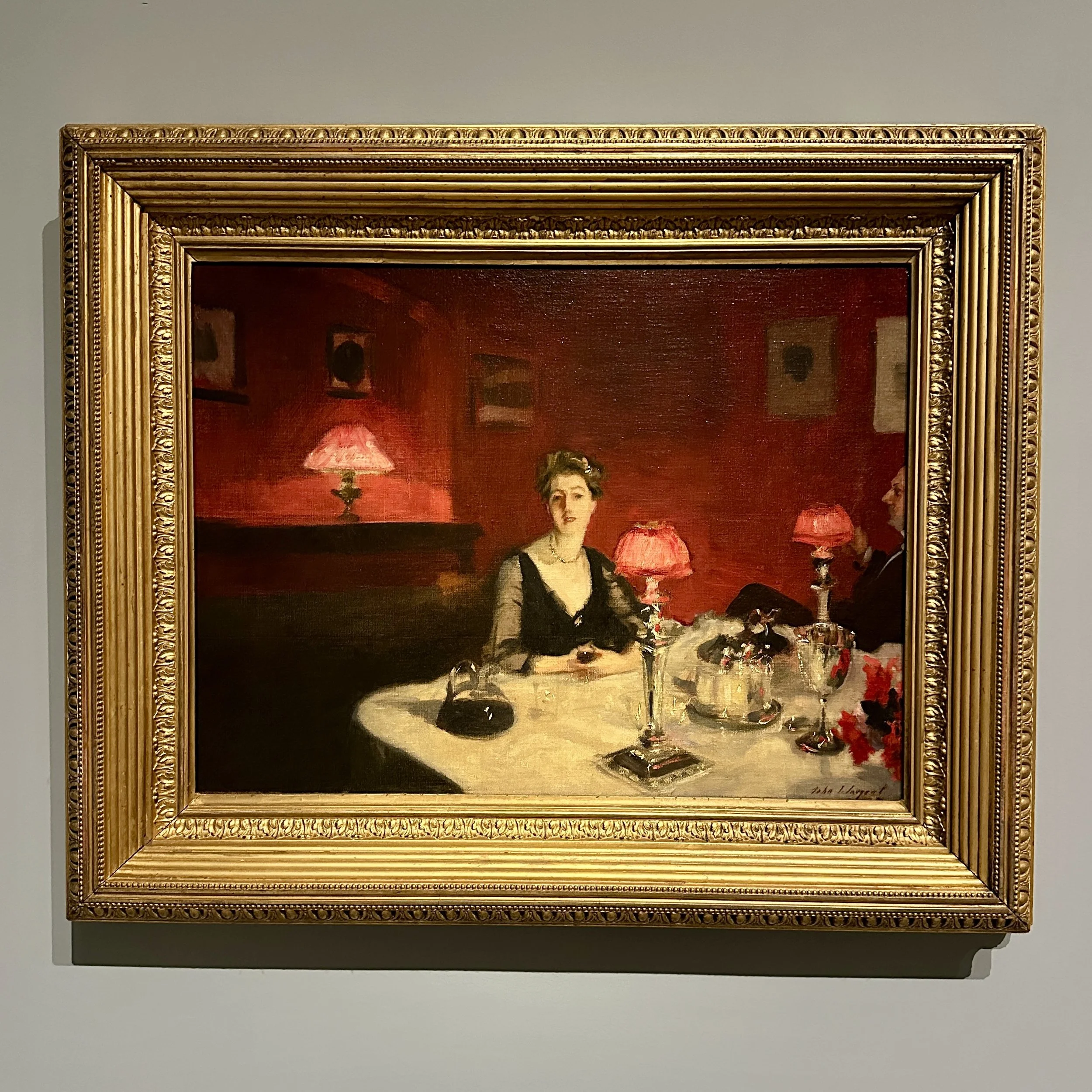Sargent and Paris
A Viewing Room Experience
Metropolitan Museum of Art | Through August 3, 2025
While this exhibition is close to completion, we hope this viewing room experience allows you to understand, learn, and view the exhibition how we did.
My first introduction to John Singer Sargent didn’t come from a museum visit, but through a dear friend and elderly neighbor named Mrs. Kathleen. She once told me, with complete certainty, that Sargent was her all-time favorite artist — and not just any artist, but “the greatest portrait artist to ever live.” That’s a bold statement, especially coming from someone who had witnessed so much art history in her lifetime. At the time, I was still young, still discovering my own tastes in art, but her passionate declaration stuck with me.
Rosina Ferrara (Capri Peasant – Study), Oil on canvas, 1879
Since then, whenever I encountered a Sargent painting—his exquisite rendering of skin tones, the confident sweep of his brush, and the elegant poise of his sitters—I couldn’t help but think of Mrs. Kathleen. She became a sort of invisible companion during my museum visits, a reminder of the beauty and mastery captured in his work.
So, when I walked into Sargent and Paris at The Met, my thoughts immediately turned to her. I found myself imagining what she might say about each piece—“She’d love this one,” I’d think, or “Maybe not this one.” Moving slowly through the galleries, I took my time, feeling as if Mrs. Kathleen were right there beside me, sharing in the discovery. The experience became less about viewing art alone and more like a quiet conversation across time.
Rehearsal of the Pasdeloup Orchestra at the Cirque d'Hiver, Oil on canvas, 1879-1880
The exhibition itself traces a pivotal decade in Sargent’s life, beginning in 1874 when an ambitious eighteen-year-old arrived in Paris. The city was still healing and reinventing itself after the Franco-Prussian War, rapidly emerging as the hub of modern European art. For Sargent, Paris was the perfect place to learn, experiment, and begin forging his path.
Though born in Florence to American parents, Sargent’s upbringing was truly international. He spent his youth moving between Italy, France, and Germany, becoming fluent in several languages and absorbing a variety of cultural influences. His mother, an avid amateur watercolorist, encouraged him to sketch daily—training his eye and hand long before he entered formal art school. After some initial studies at the Accademia di Belle Arti in Florence, his family decided that Paris offered the best environment to nurture his talent. And they were right.
Atlantic Storm, Oil on canvas, 1876
In the Studio
In May 1874, Sargent arrived in Paris and began studying under the celebrated portraitist Carolus-Duran. Simultaneously, he attended the prestigious École des Beaux-Arts intermittently until 1877. Under Duran’s mentorship, Sargent absorbed the academic tradition and deepened his technical skill through rigorous study and countless hours copying Old Masters at the Louvre. His early works from this period reflect a solid foundation in draftsmanship and a burgeoning confidence in portraiture.
By 1877, just three years after arriving, Sargent debuted at the Paris Salon—the city’s most important annual exhibition—showing a portrait of his friend Fanny Watts, marking the beginning of his public career.
Head of a Male Model, Oil on canvas, 1878
Beyond the Studio
En route pour la pêche (Setting Out to Fish), Oil on canvas, 1878
While Paris anchored Sargent’s development, summers offered a chance to escape the city and seek inspiration elsewhere. He painted brisk seascapes and landscapes along the rugged coasts of Normandy and Brittany. In 1876, he made his first trip to the United States, expanding his perspective and artistic network.
Sargent’s interest in painting outdoors was influenced heavily by the Impressionists, whom he admired and encountered in Paris. He attended their 1876 exhibition and developed a lasting friendship with Claude Monet, a pioneer of plein-air painting. Sargent’s fluid and expressive technique suited the spontaneity and immediacy of painting outdoors.
Claude Monet painting by the edge of a wood, Oil on canvas, 1885
His travel sketches and plein-air studies were not merely exercises—they became the basis for major paintings that he exhibited both in Europe and America. Subjects ranged from local people to architectural scenes and seascapes, reflecting popular interests of the era. In 1878, he exhibited two significant works at the Paris Salon—a landscape of Capri and a portrait of Carolus-Duran—which earned him honorable mention. Critics observed that Sargent was beginning to outshine his master, a sign of his rapid ascent.
The Lure of Travel
After completing his formal training, Sargent sought to deepen his engagement with historic art and culture through travel. Between 1879 and 1880, he journeyed extensively through Spain and Morocco, drawn by the rich heritage and vivid light of the Mediterranean.
Ramón Subercaseaux in a Gondola, Oil on canvas mounted on board, 1880
In Madrid, Sargent made an artistic pilgrimage to study and copy the great works of Diego Velázquez at the Prado Museum, whose influence would become a hallmark of his style. He then ventured southward to paint and immerse himself in Spain’s vibrant music and dance scenes. Crossing into Morocco around the new year, he captured exotic scenes and local life before returning to Paris.
Though Italy had been part of his childhood, Sargent longed to revisit it as a fully formed artist. Venice, in particular, held a special fascination. During extended stays in 1880 and 1882, he painted unusual views that eschewed typical tourist perspectives, presenting intimate and fresh compositions that reflected both his technical mastery and his desire to reveal hidden beauty.
Fumée d'ambre gris (Smoke of Ambergris), Oil on canvas, 1880
Fascinating Portraits
In the early 1880s, Sargent balanced his travels with focused studio work in Paris, determined to build his reputation. He crafted increasingly ambitious portraits designed to capture attention at the Paris Salon, where hundreds of thousands of visitors crowded galleries filled from floor to ceiling with paintings hung alphabetically.
Critics noted that Sargent’s portraits had a rare quality: they would stop viewers in their tracks, fascinating and engaging them. This ability was crucial in the competitive Salon environment, where thousands of works jostled for recognition.
Madame Ramón Subercaseaux (Amalia Errázuriz y Urmeneta), Oil on canvas, 1880
Between 1879 and 1882, Sargent created some of his most striking portraits, often drawing sitters from his circle of friends and acquaintances within Parisian artistic society. These portraits were not merely likenesses but statements of social status during a time when portraiture validated personal and public identity. His rapid rise sparked envy among some critics, who grumbled about Americans like Sargent taking away medals and overshadowing French sitters.
The Most Talked-About Painter in Paris
By 1882, Sargent had become the sensation of the Paris Salon. His flattering portrait of Charlotte Burckhardt won acclaim, while El Jaleo, a monumental and dynamic depiction of a Spanish flamenco dancer, cemented his status as “the most talked-about painter in Paris.”
The Daughters of Edward Darley Boit, Oil on canvas, 1882
Under intense pressure to deliver another masterpiece in 1883, Sargent broke with tradition. Instead of completing two planned portraits of society women, he submitted The Daughters of Edward Darley Boit, a psychologically rich and unconventional portrait of his friends’ children. Set in a mysterious, shadowed interior and influenced by Velázquez and avant-garde contemporaries like Edgar Degas, the painting divided opinion but was widely recognized as a bold, modern statement.
Friendship & Patronage
Sargent’s success was closely tied to a vibrant social network of artists, writers, critics, and patrons. Known for his charm and affability, he moved fluidly through salons and studios alike. The novelist Henry James praised his personality as “charmingly naïf, but not his talent.”
Edouard and Marie-Louise Pailleron (Portraits de M. E. P. . . . et de Mlle L. P.), Oil on canvas, 1881
Critics such as Louis de Fourcaud and Emma Allouard-Jouan wrote insightful reviews that helped bolster Sargent’s reputation and attract commissions. Many portraits from this period were gifts to close friends and influential patrons, painted in an experimental style that reflected their progressive tastes.
Sargent became renowned for flattering portraits of women from Parisian artistic and high society circles, cultivating relationships that situated him at the cultural heart of the city and secured his career’s momentum.
La Parisienne
In the latter half of the 19th century, the Parisienne became a symbol of modernity and cosmopolitan elegance, capturing the imagination of French society and beyond. Portrayed as having “arisen like Venus from the waters of the Seine,” she was celebrated as a national ideal.
Woman Wearing Gloves, also known as “The Parisienne”, Oil on canvas, 1883
This mythic figure appeared in plays, newspapers, and satirical cartoons, and artists vied to capture her elusive chic on Salon walls. At the same time, anxieties about foreign influence fueled debates about who could truly embody Parisian style.
In this exhibition, six portraits of Parisiennes by Sargent and his contemporaries trace a spectrum of interpretations—from conservative to avant-garde—that reveal the era’s fascination with poised femininity. Sargent keenly studied these representations as he sought to please his sitters and distinguish his work.
Madame X
Installation views of the galleries. (Courtesy of Museum)
Virginie Amélie Avegno Gautreau was a striking figure in Parisian society by the early 1880s. Born in New Orleans to French parents and married to a French banker, she quickly rose in social circles. Sargent, eager to create a Salon-defining portrait, convinced her to pose for him without a commission, intending to craft a masterpiece.
The resulting painting, Madame X, portrayed Gautreau with a dramatic pose and a revealingly slipped shoulder strap. When exhibited at the 1884 Paris Salon, it sparked scandal. Critics questioned the sitter’s morality, attacking the “excessive” cosmetics and the suggestive pose. Gautreau’s mother begged Sargent to withdraw the work, but he stood by it.
Despite the controversy, Gautreau embraced the attention, soon appearing in public wearing a similarly daring dress. Sargent later sold the painting to The Met in 1916, calling it “the best thing I’ve done,” and insisted on the title Madame Xto preserve her anonymity.
Madame X (Virginie Amélie Avegno Gautreau), Oil on canvas, 1883–84
The Paris Salon of 1884
The 1884 Salon featured an overwhelming 2,488 paintings displayed floor to ceiling in a chaotic jumble. Against this dense backdrop, Madame X stood apart with its unconventional pose and intense emotion.
This section of the exhibition recreates the crowded Salon atmosphere, including reproductions and period materials that capture the public’s intense reaction and the global buzz generated by the painting’s debut.
Capri Girl on a Rooftop, Oil on canvas, 1878
Uncanny Spectacle
Following the uproar over Madame X, Sargent spent five months in England in 1884 fulfilling commissions. His success there helped restore his reputation in France by the next Salon in 1885.
Le Verre de Porto (A Dinner Table at Night), Oil on canvas, 1884
Encouraged by Henry James and others, Sargent moved permanently to London in 1886, where he lived until his death in 1925. Yet Paris remained central to his identity—he continued to exhibit there and often returned.
In 1887, critics described his Paris oeuvre as “the slightly ‘uncanny’ spectacle of a talent which on the very threshold of its career has nothing more to learn.” His later honors included the French government’s purchase of La Carmencita in 1892, affirming his lasting legacy in the city that had shaped him.
Conclusion: Presence and Legacy
By the mid-1880s, Sargent left Paris for London, his reputation tarnished by scandal but his talent undeniable. Sargent and Paris tells the story of how an ambitious American forged his path in the most important art capital of the time—and how that decade shaped everything that came after.
But for me, it was more than a historical journey. It was personal. I felt Mrs. Kathleen in the room with me. I imagined her delight, her discerning eye. I think she would’ve been proud to see how far that curious young student (me) had come—and how right she was about Sargent all along.
Sargent and Paris
A fascinating look at John Singer Sargent's formative years as a young painter in Paris, a city that helped forge his artistic identity and sparked his rise to the pinnacle of the nineteenth-century art world
Sargent and Paris ultimately offers not just a portrait of an artist, but of an era. It’s a story of growth, risk, reputation, and reinvention—an artist shaped by a city in motion and a city, in turn, challenged by his vision. For anyone curious about how genius takes root, this exhibition is a masterclass in emergence.
And for me, it was also something more. A quiet conversation between brushstrokes and memory. A reminder of Mrs. Kathleen, whose admiration planted the seed. As I stood before Madame X, I found myself nodding slightly, as if to say, You were right.
After this extraordinary exhibition concludes at The Met, it will continue its journey across the Atlantic to the Musée d'Orsay in Paris, where it will be on view from September 22, 2025, through January 11, 2026. This presents a rare opportunity to experience Sargent’s formative decade of work in the city that shaped him, both in New York and in the heart of Parisian culture.
ENJOYED THIS ARTICLE?
We’re fully funded by donations and memberships — your support helps us keep going.
Pledge your support today — it’s greatly appreciated!


